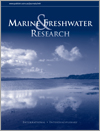Marine and Freshwater Research
Volume 75
Number 11 2024
Lake tourism-optimisation water-conservancy projects are indeed conducive to creating a safe leisure and tourism environment, thereby enhancing human interaction, historical monument protection and local visibility. However, problems such as shortage of basic public facilities and excessive tourism waste will still affect people’s perception of the local environment and willingness to consume.
This article belongs to the collection Ecological Monitoring and Assessment of Freshwater Ecosystems: New Trends and Future Challenges.
This study introduces a new model for evaluating urban water management, blending social, economic and environmental factors. The model helps cities better assess and manage their water resources, promoting sustainability and economic progress. By improving water-saving strategies and addressing urban water challenges, the research offers valuable insights for policymakers aiming for sustainable urban development.
This article belongs to the collection Ecological Monitoring and Assessment of Freshwater Ecosystems: New Trends and Future Challenges.
Tachypleus gigas is artificially bred to increase its population because of its diminishing natural spawning grounds. Spawning experiments were conducted in an artificial spawning ground to determine the spawning preference of T. gigas on three different sediment sizes. We suggest that medium to coarse sediments are optimal for T. gigas spawning in artificial spawning grounds.





